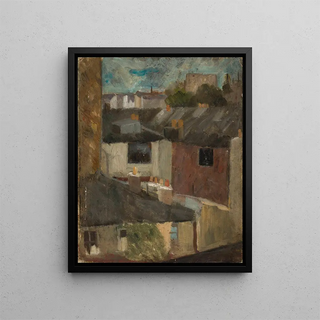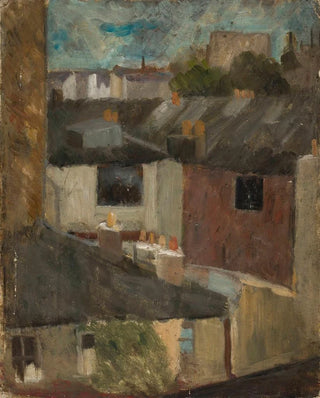Art print | View through the workshop window - Tadeusz Makowski


View from behind

Frame (optional)
In the fascinating universe of art, some artworks manage to transcend eras and capture the very essence of human creativity. "View through the window of a studio - Tadeusz Makowski" stands among these iconic creations. This painting, evoking an atmosphere that is both intimate and contemplative, invites the viewer to immerse themselves in a world where art and reality intersect. Makowski's skillfully orchestrated composition, blending light and shadow, allows for a profound connection with the artistic process itself, while awakening an insatiable curiosity about what lies behind this window.
Style and uniqueness of the work
Tadeusz Makowski's style is distinguished by his ability to fuse elements of reality with touches of surrealism. In "View through the window of a studio," the artist employs a delicate color palette, where pastel tones blend harmoniously to create a soft, dreamlike ambiance. The window, a symbol of openness to the outside world, becomes the focal point of the piece. Through it, elements of nature and everyday objects are depicted with a precision that borders on poetry. The forms are both simplified and loaded with meaning, revealing a universe where the mundane transforms into the sublime. This unique approach makes the work a true invitation to contemplation, offering the viewer a moment of escape and reflection.
The artist and his influence
Tadeusz Makowski, born in Poland in the early 20th century, left a mark on his era with an innovative artistic vision. Influenced by the artistic movements of his time, he managed to incorporate elements of cubism and fauvism into his work, while maintaining a sensitivity unique to his cultural background. Makowski was also a keen observer of daily life, and his works often reflect a gentle melancholy tinged with nostalgia. By choosing to depict scenes of ordinary life, he gave voice to universal emotions, thus reaching a broad audience. His legacy endures today, and "View through the window of a studio" is a striking example, testifying

Matte finish

View from behind

Frame (optional)
In the fascinating universe of art, some artworks manage to transcend eras and capture the very essence of human creativity. "View through the window of a studio - Tadeusz Makowski" stands among these iconic creations. This painting, evoking an atmosphere that is both intimate and contemplative, invites the viewer to immerse themselves in a world where art and reality intersect. Makowski's skillfully orchestrated composition, blending light and shadow, allows for a profound connection with the artistic process itself, while awakening an insatiable curiosity about what lies behind this window.
Style and uniqueness of the work
Tadeusz Makowski's style is distinguished by his ability to fuse elements of reality with touches of surrealism. In "View through the window of a studio," the artist employs a delicate color palette, where pastel tones blend harmoniously to create a soft, dreamlike ambiance. The window, a symbol of openness to the outside world, becomes the focal point of the piece. Through it, elements of nature and everyday objects are depicted with a precision that borders on poetry. The forms are both simplified and loaded with meaning, revealing a universe where the mundane transforms into the sublime. This unique approach makes the work a true invitation to contemplation, offering the viewer a moment of escape and reflection.
The artist and his influence
Tadeusz Makowski, born in Poland in the early 20th century, left a mark on his era with an innovative artistic vision. Influenced by the artistic movements of his time, he managed to incorporate elements of cubism and fauvism into his work, while maintaining a sensitivity unique to his cultural background. Makowski was also a keen observer of daily life, and his works often reflect a gentle melancholy tinged with nostalgia. By choosing to depict scenes of ordinary life, he gave voice to universal emotions, thus reaching a broad audience. His legacy endures today, and "View through the window of a studio" is a striking example, testifying






